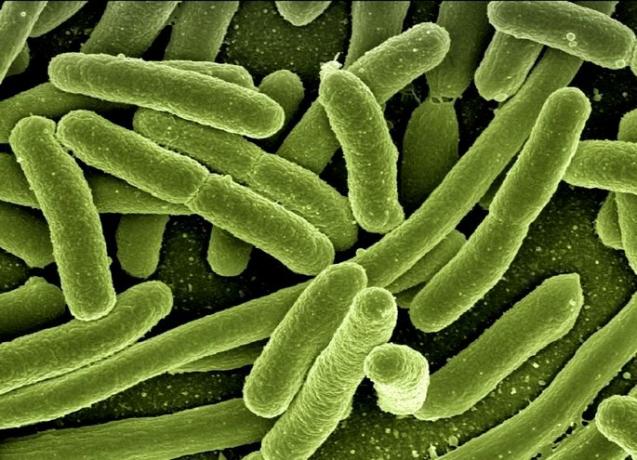You fungi eukaryotic and unicellular or multicellular organisms. These beings can be macroscopic or microscopic and are part of the Fungi Kingdom.
At bacteria They are prokaryotic and unicellular organisms. Because they do not have a well-defined cell nucleus, they are considered simple organisms and are part of the Monera Kingdom.
You virus are acellular beings and intracellular parasites formed by a protective capsule that envelops their genetic material. As they do not have a cell, there is a lot of discussion about considering them living beings or not.
fungi
You fungi are eukaryotic beings grouped in the phyla chytridiomycetes, ascomycetes, basidiomycetes, zygomycetes and deuteromycetes of the Fungi Kingdom.
These beings feed on other living beings, so they present heterotrophic nutrition. There are microscopic and macroscopic fungi, which are found in soil, water, other living organisms and in general debris.
Mushrooms are the best known fungi, as many varieties are used in food. In addition to them, lichens, mold, molds and yeasts are also examples of fungi.

Fungi are used in the production of medicines, such as the antibiotic penicillin, in the manufacture of food, as in the fermentation of beverages using yeast and in the preparation of food. Mushrooms of the champignon type are the most known and consumed.
Because they thrive in hot and humid environments, many fungi can cause health problems. Mycoses, chilblains, candidiasis and histoplasmosis are examples of diseases caused by fungi.
Learn more about the fungi.
Bacteria
At bacteria are microscopic, prokaryotic and unicellular beings that are part of the Monera Kingdom. These organisms have simple organization and feed on other beings.
These organisms can live, singly or form colonies, in soil, water, air, other organisms and in debris.

Bacteria have many functions and applications. In our body, for example, there are bacteria in the gastrointestinal tract, which act mainly in the protection of the intestinal microbiota.
In food production, acetic bacteria are widely used in the production of vinegar and lactobacilli, from the probiotic group, are useful in the manufacture of cheeses and yogurts.
However, some types of bacteria can also cause disease. Examples of bacterial infections are botulism, leprosy, meningitis, tuberculosis and tetanus.
Learn more about bacteria.
Virus
Viruses are acellular beings and therefore there is a lot of discussion about whether they are considered living beings or not. In these organisms, the genetic material is enclosed in a protective shell.
The main characteristic of viruses is that they are intracellular parasites and therefore need a cell to reproduce.

A virus can even infect fungi and bacteria, as its size varies from 20 to 300 nm. Outside a cell, viruses remain inert and are viral particles called a virion.
Many viruses are used in Biotechnology for cellular studies. However, many are disease-causing. AIDS, measles, flu and rubella are examples of viruses. The SARS-CoV-2 virus is a virus belonging to the family of coronaviruses and it causes the disease COVID-19.
Learn more about the virus.
And the protozoa?
You protozoa are eukaryotic, unicellular and heterotrophic organisms that are part of the Protista Kingdom. Most of these beings are free-living aquatic beings and are classified according to the way they move in sarcodynes, ciliates, flagellates and sporozoans.
For example, the amoeba is a sarcodyne-type protozoan and Trypanosoma cruzi, which causes Chagas disease, is a flagellate-type protozoan.

Gain more knowledge with the contents:
- Microorganisms: what they are and types
- Fungi exercises
- Exercises on bacteria
- Virus exercises

